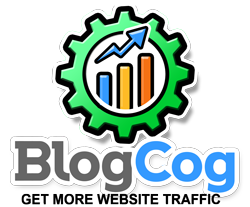
How to Find and Update 'Zombie' Pages for a Traffic Boost: Breathe New Life into Your Website
Share
As online tools reshape retail rules, businesses are constantly hunting for ways to stay relevant and visible. If you’ve ever looked at your site’s analytics and seen a few pages with zero visits, you're not alone. These forgotten pages are what experts call 'zombie pages'—content that's still technically alive on your site, but it’s not doing much for your traffic or rankings. But fear not, there’s a way to bring these pages back from the dead and give your website the traffic boost it desperately needs!
Zombie pages are the undead of the digital world. They exist on your website, but they fail to pull in visitors, aren't optimized for SEO, and generally contribute nothing to your site's visibility. These pages could be outdated blog posts, forgotten product listings, or content that never gained traction. They quietly exist, haunting your site without contributing to your SEO performance. The good news? You can update these pages and transform them into traffic-driving assets.
Why is this important? Well, every page on your site that isn’t pulling its weight is a missed opportunity. Google loves fresh, optimized content. By revisiting your zombie pages, updating them with relevant keywords, fresh information, and proper formatting, you can give your traffic a much-needed jolt. It's like planting seeds in your content garden—if you nurture them right, they’ll grow into powerful traffic generators.
What Exactly Are Zombie Pages?
Zombie pages are those that are buried deep in your website’s content archives, often neglected and forgotten. They can be pages that you created years ago, products that never took off, or blog posts that are outdated and no longer relevant. These pages may still exist on your site, but they rarely show up in search results or drive any meaningful traffic.
How Do Zombie Pages Affect Your Website?
Zombie pages are like silent traffic killers. They consume your site’s resources without delivering any measurable return. If your site has too many of them, it can hurt your overall SEO performance. Google’s algorithms might view your site as less authoritative or relevant if it finds too many outdated or poorly optimized pages. In some cases, zombie pages could even negatively impact your rankings for more important content.
Identifying Zombie Pages: The First Step
Before you can perform any resurrection rituals, you need to identify your zombie pages. Luckily, it’s easier than it sounds. Here are a few methods:
- Check Analytics: Use Google Analytics to track pages with low traffic. Pages with little to no traffic over a long period are prime candidates for your zombie list.
- Review Search Console: Google Search Console can help you find pages that are indexed but aren't showing up in search results. If these pages aren’t ranking for any keywords, it’s time for an update.
- Use an SEO Tool: Tools like SEMrush, Ahrefs, or Moz can help you spot pages that aren’t performing well in search engines. Look for pages with high bounce rates or low engagement.
How to Update Your Zombie Pages for Maximum Impact
Once you've identified your zombie pages, it's time to bring them back to life. Here’s how:
- Update the Content: Rewriting or refreshing the content is essential. Add new, relevant information, optimize for current keywords, and ensure your content is well-structured for both users and search engines.
- Optimize for SEO: Make sure your page is fully optimized with the latest SEO techniques. Add relevant keywords, update meta descriptions, and ensure the page loads quickly. If your page hasn’t been optimized for mobile, now’s the time to do so.
- Revise Your Call to Action: A zombie page might not be effective if it lacks a clear call to action (CTA). Make sure visitors know what to do next—whether it’s buying a product, reading another article, or signing up for your newsletter.
- Improve Internal Linking: Update internal links to point to more relevant pages. This helps spread the link equity across your site and improves user experience.
- Update Images: If your page contains old images or broken links, replace them. This not only improves the user experience but also keeps your content visually appealing and up-to-date.
When to Delete a Zombie Page
Sometimes, no matter how hard you try, a zombie page just isn’t worth saving. If the content is completely irrelevant or outdated, or if it's bringing down your site’s performance, it might be time to delete it. However, always set up a proper 301 redirect to send traffic to a more relevant page, so you don’t lose valuable backlinks or user flow.
Zombie Pages Are No Match for BlogCog
If updating zombie pages sounds like a lot of work, don’t worry—BlogCog’s AI-driven blog subscription service can help you consistently create fresh, optimized content that will keep your site in top shape. With BlogCog’s onboarding and indexing services, you can ensure that your content gets seen and performs well across search engines.
Keep your site’s content fresh, relevant, and optimized with BlogCog, and watch your traffic soar. Because when it comes to website traffic, a little bit of SEO magic can go a long way!
Wrapping It Up: Your Next Steps
Reviving zombie pages doesn’t have to be a daunting task. With the right approach, these forgotten pages can become powerful assets that drive traffic and boost your rankings. Remember, updating your content, optimizing for SEO, and ensuring a great user experience are key to success. So, start identifying your zombie pages and give them the treatment they deserve!
Ready to take the next step in boosting your site’s performance? Check out our AI-driven blog subscription and start creating SEO-friendly, traffic-boosting content today!
Related Posts:
- How to Update Old Blog Posts for SEO - Refreshing content to rank higher. A Strategic and Fun Guide for Business Owners
- The 'Content Decay' Audit: How to Revive and Update Old Content and Boost Your SEO Performance
- How to Audit for 'Index Bloat' and Purge Useless Pages: A Step-by-Step Guide to Clean Up Your Site and Boost SEO
- Using Blogs to Drive Traffic to Your Product Pages
- The Universal Problem of How to Get Website Traffic
